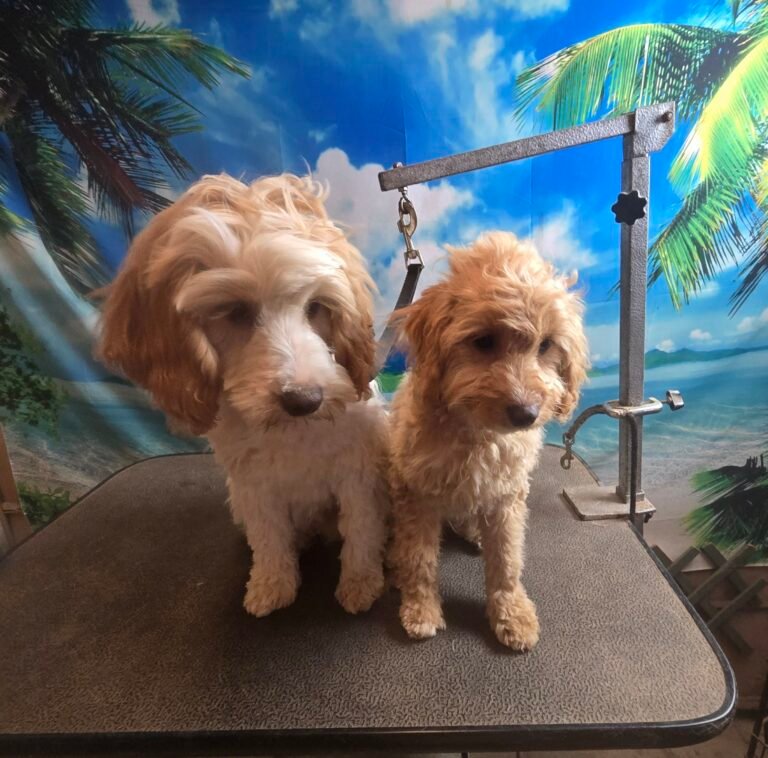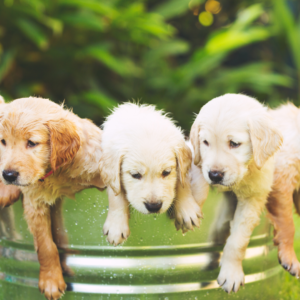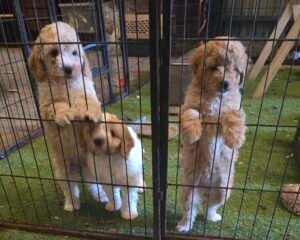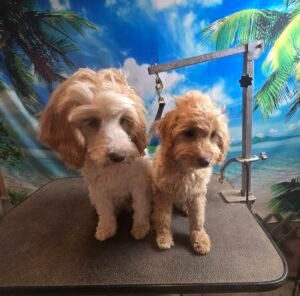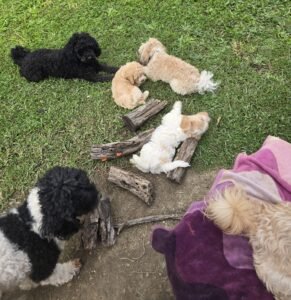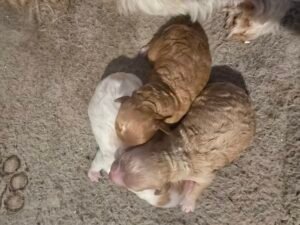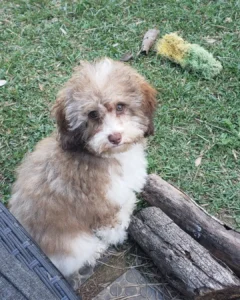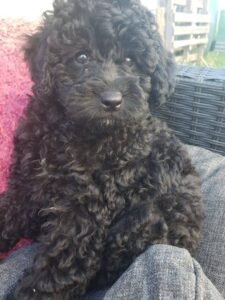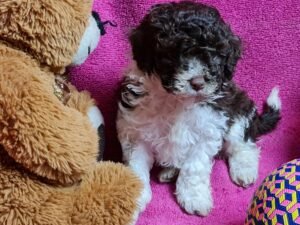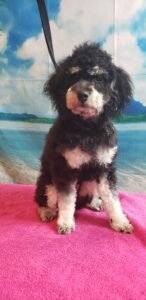Miniature vs Toy Cavoodles: What You Need to Know Before Choosing Your Perfect Pup
If you’ve been looking for a Cavoodle (a Cavalier King Charles Spaniel x Poodle), you’ve probably come across two size options: Toy Cavoodle and Miniature Cavoodle. But what’s the real difference between the two — and does it actually matter?
Let’s break it all down so you can make the right choice for your lifestyle and home.
🧬 How the Two Sizes Came About
When Cavoodles first became popular, breeders used Toy Poodles almost exclusively, producing the “classic” small companion dog. Over time, demand grew for Cavoodles that were slightly sturdier and better suited to families with kids or more active households. Breeders began introducing Miniature Poodles, which resulted in the Miniature Cavoodle.
But here’s the important part: Poodle sizing is based purely on height, not genetics. Many poodles — especially those from pet breeders rather than show lines — have both toy and miniature ancestors somewhere in their pedigree. This means you can get a “small miniature” or a “large toy” from the same bloodline.
So, it’s not uncommon to see a litter with puppies that will mature into different ends of the size range. The distinction between toy and miniature is a guideline, not a hard genetic split.
🐾 What Defines the Difference?
The main difference between toy and miniature Cavoodles comes from the size of the Poodle parent:
- Toy Cavoodle – Bred from a Toy Poodle (approx. 24–28 cm at the shoulder, 3–6 kg)
- Miniature Cavoodle – Bred from a Miniature Poodle (approx. 28–38 cm at the shoulder, 6–9 kg)
Because size is measured by height rather than DNA, there’s some overlap — a “big toy” Cavoodle and a “small miniature” Cavoodle may end up about the same size as adults.
🍼 Can You Get Both in One Litter?
Yes — and it’s more common than you might think. Because poodles often have toy and miniature genetics mixed in, a single litter can produce puppies that grow into different sizes.
Breeders will often make an educated guess about which pups will finish on the smaller or larger side, based on birth weight, growth patterns, and experience — but there’s always a chance for surprises.
🏡 Which One Should You Choose?
This really comes down to your lifestyle:
- Toy Cavoodle – Ideal for apartment living, singles/couples, or anyone who wants a smaller lap dog they can take everywhere.
- Miniature Cavoodle – Great for families with kids, active households, or people who enjoy longer walks and playtime. Miniatures are slightly more robust and less fragile than toys.
✅ Dos and ❌ Don’ts
DO:
- Choose a reputable breeder who does health and DNA testing (this matters more than size!).
- Match the puppy’s temperament with your lifestyle — don’t pick purely on size.
- Plan for proper training and socialisation — both sizes need mental stimulation.
DON’T:
- Choose a toy Cavoodle purely because it’s “cute and tiny” — smaller dogs can be more prone to injury from rough handling.
- Assume a miniature Cavoodle will automatically be “better with kids” — personality is key, not just size.
- Forget that both sizes are active, intelligent dogs that need daily exercise.
❤️ Health Considerations
There’s no solid evidence that one size is healthier than the other. What matters most is the health of the parents — particularly heart checks for the Cavalier parent and DNA testing for common poodle and cavalier conditions.
That said:
- Toy Cavoodles may be more prone to luxating patellas (knee issues) just because of their smaller size.
- Miniatures may be slightly less fragile, but can still develop issues if bred irresponsibly.
- Bottom line: a well-bred toy or miniature Cavoodle from health-tested parents should have similar life expectancy and health outcomes.
🐶 Final Thoughts
Both toy and miniature Cavoodles make wonderful companions — loving, intelligent, and hypoallergenic-friendly. The “right” choice is the one that fits your home, lifestyle, and energy level.
When in doubt, talk to your breeder about what you’re looking for:
- Activity level
- Household setup (kids, yard, apartment)
- How much time you’ll spend walking/playing
- Whether you prefer a smaller lap dog or a slightly sturdier companion
A good breeder will guide you toward the puppy that’s the best match — size included.
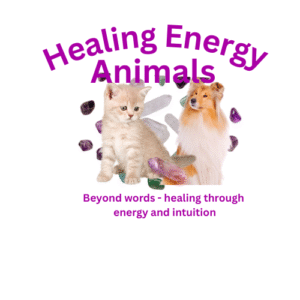

Kareema
Healing Energy Animals
Kareema is the owners of Healing Energy Animals where devil dogs, horrible horses and crazy cats are turned into perfect pets using Relationship Animal Training and over 50 years of experience training a wide variety of animals.
Healing Energy Animals provides owners and pet professionals assistance with with common pet behavior training, feeding and grooming issues such as barking, escaping, scratching, aggression and fleas. Kareema consults and writes widely on a range of pet care issues for owners and also assists pet care professionals in setting up and growing their businesses by the provision of customer handling advice, sales and marketing strategies and up to date product information that allows for the differentiation of their pet care business from their competitors.
Healing Energy Animals is an Australian business but operates worldwide via the provision of virtual services.
